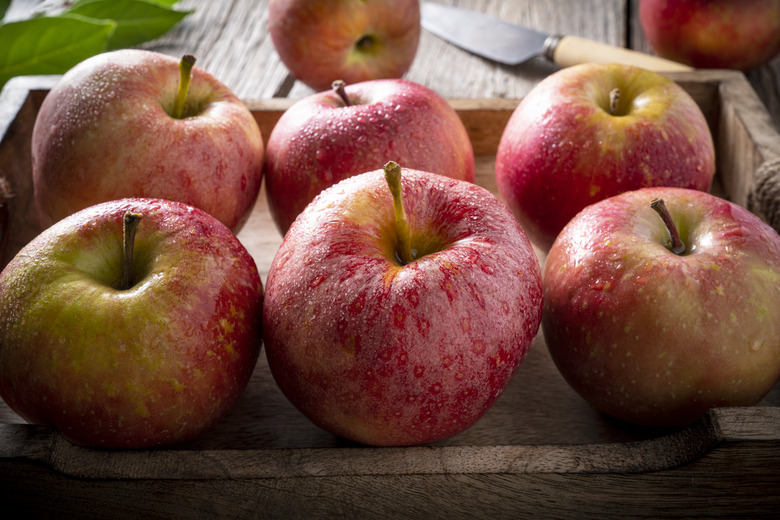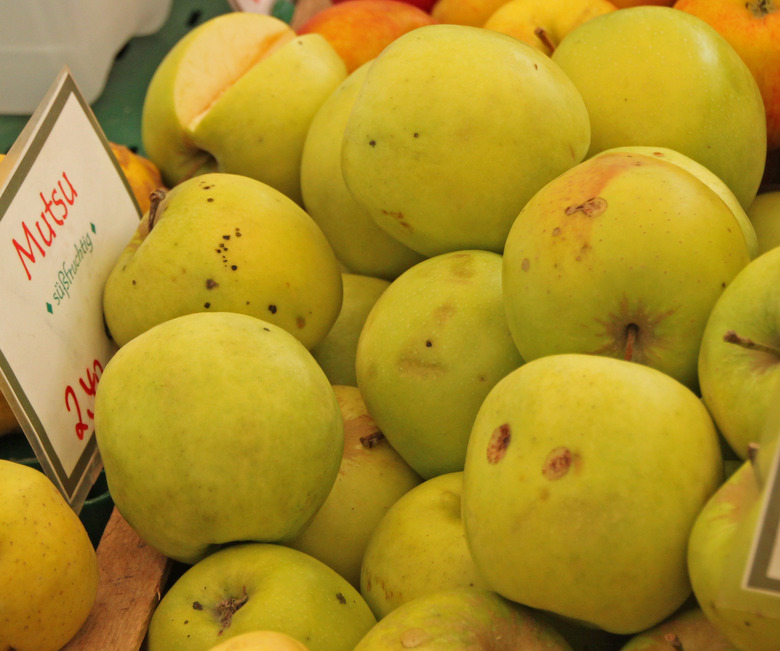What Is The Largest Type Of Apple Grown?
It's tough to identify the "world's largest apple" because the world is a large place, and who knows where that behemoth of apples might be lurking?
Do you perhaps want to know the apple that holds the record as the world's largest apple (Malus spp.)? Or is it more relevant to find out which type of cultivar produces the largest apples?
The World's Biggest Apple on Record
The record for the largest apple in the world is currently held by Chisato Iwasaki, reports Guinness World Records. Iwasaki picked this apple at his own apple farm in Hirosaki City, Japan, on October 24, 2005. It weighed 4 lbs., 1 oz.
Guinness does't reveal the cultivar of this apple, but other sources report that it was a Hokuto (Malus x domestica 'Hokuto') variety, which is a hybrid of Fuji and Mutsu.
The Largest Apple Varieties to Grow
Just because the largest harvested apple ever recorded was a Hokuto doesn't mean that the cultivar Hokuto always produces larger apples than other varieties. Many factors go into the development of a single fruit, but some apple trees do typically produce very large apples compared to other varieties.
The primary large-apple producers include:
- **Mollie's Delicious:** Large to very large fruits, with a conical shape and a pinkish-red color. Ripens early, i.e. late summer to fall.
- **Mutsu (Crispin):** Large fruit with a yellow-green color. Juicy and flavorful. Ripens in late September.
- **Shizuka:** A hybrid between golden delicious and Indo. Fruits are large with green to yellow skin. Ripens in mid-October.
- **Goldrush:** Large semi-tart, juicy yellow fruit. Ripens in late October.
Choosing an Apple Variety to Eat
When choosing an apple to grow—or just to eat—size is not a real factor.
For eating, texture and flavor matter most, as well as whether the apple is tart, sweet or a combination of the two. Avoid bruises, discoloration or soft spots. And yes, you want it juicy if you are going to eat it fresh.
Most consumers prefer crisp apples that are crunchy when bitten into. Common apples that have these characteristics, which you can also find in a grocery store without too many problems, include Braeburn, empire, gala, jazz, Jonagold, honeycrisp and Fuji.
Tip
Consult with your local university extension office for advice regarding apple varieties and cultivars that will do well in your location that meet your desired characteristics.
Choosing an Apple Variety to Grow
If you're planning to plant an apple in your landscape, you have an entirely different set of qualifications to evaluate.
- **Mature Size:** At the top of the list is determining its mature size to ensure that it will fit in its designated location in your yard.
- **Pollination:** Does it need another tree for pollination and, if so, you'll need to make room for a second tree.
- **Disease Resistance:** Perhaps disease resistance should be the first thing on your list, because you don't want to spend years nursing a young apple seedling into a fruit-bearing, mature tree only to have it become the victim of a continued onslaught by disease and pests every year.
- **Flavor:** Once you have narrowed the possible list of varieties based on these considerations, consider flavor and general fruit characteristics. The best-flavored apple in the world won't work in your location if it doesn't get pollinated properly or is too damaged by pests or disease.

